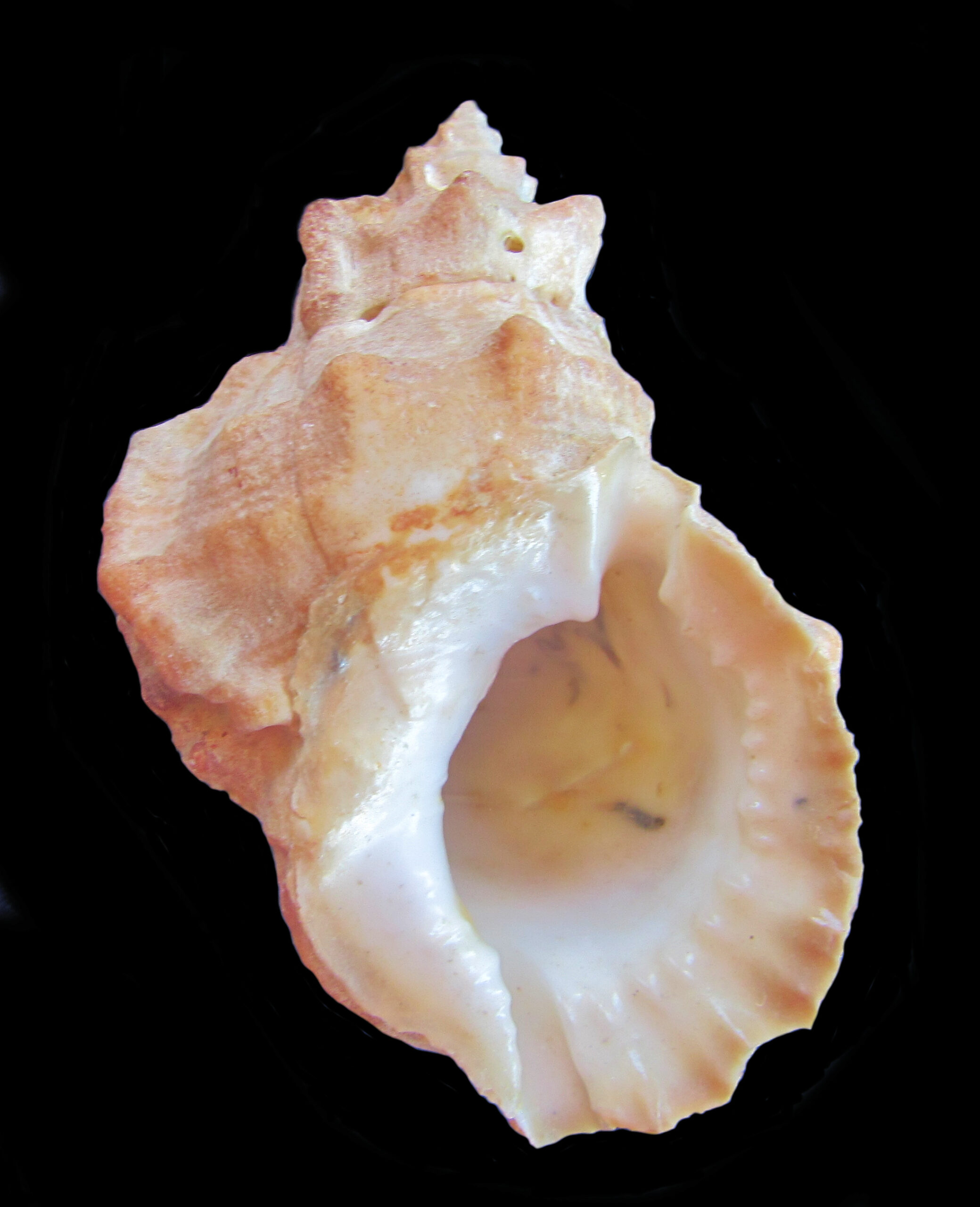 California Frog Shell, Crossata californica
California Frog Shell, Crossata californica
The Frog Shells are a member of the Bursidae Family. They receive their common name from the knobs on the shells that resemble warts that are found on frogs. They are heavy solid shells with a large body whorl, a moderately high spire that is usually blunt, knobs that resemble warts and a large aperture that is usually marked with a series of short ridges on both the inner and outer lips. Each whorl has two varices which differ in height and thickness from species to species with those from deeper water having thinner, wing-like varices. Most Frog Shells do not have a periostracum; the ones that do have a very thin periostracum. Their operculum is corneous (made of horn-like material). Some species of Frog Shells have very colorful apertures. Frog Shells vary in height from less than 2.5 cm (1.0 inch) to more than 42 cm (17 inches).
Frog Snails are found attached to rocks and within coral in shallow water; other species are found in deep water over sand and mud substrate. They prey primarily on polychaete worms and other invertebrates. In turn they are preyed upon by crabs, fish, sea stars and predatory mollusks. The Frog Shells resemble Triton Shells but differ in that they have a deep anterior and posterior slot at the ends of their aperture. Frog Snails are found in tropical and temperate seas, worldwide. There are between fifty-five and sixty-five species in the Bursidae Family with two species being found in coastal waters of Baja.